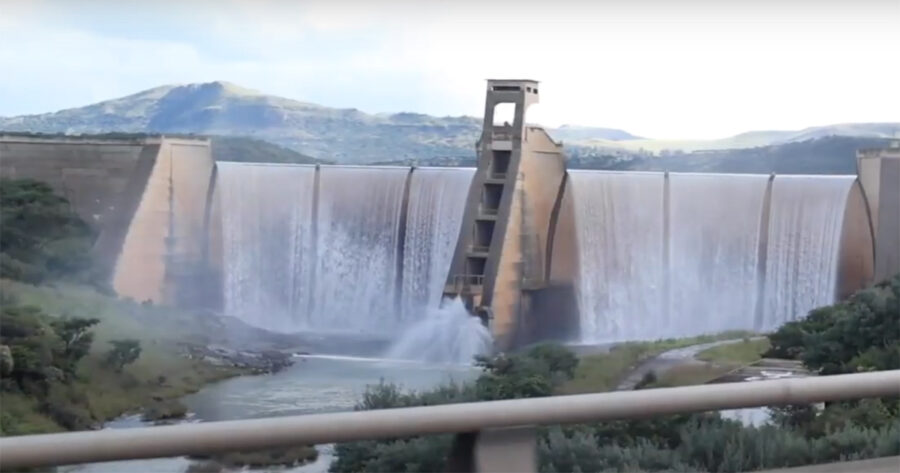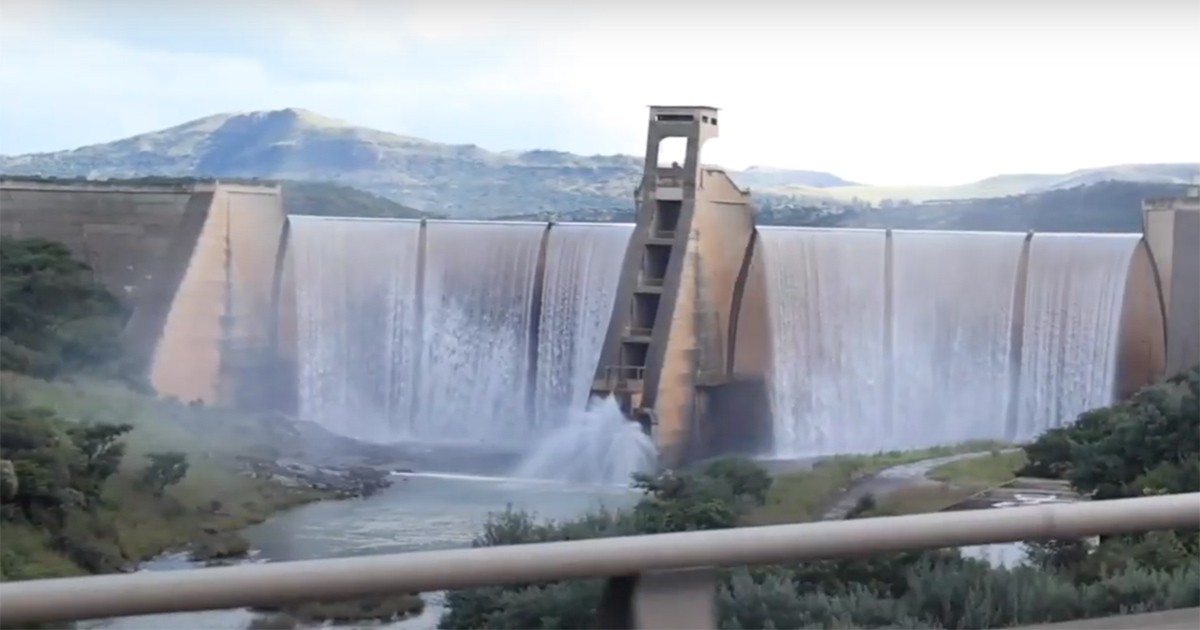
South African Dam Levels Better Than Last Year, But SA Still ‘Water-Scarce’
Although the country’s dam levels have begun dropping slightly as the country approaches the dry winter season in inland provinces, they are comparatively 15% higher compared to the same period last year. The Department of Water and Sanitation announced this morning that figures in their weekly report suggest that dam levels in general have risen […]

Although the country’s dam levels have begun dropping slightly as the country approaches the dry winter season in inland provinces, they are comparatively 15% higher compared to the same period last year.
The Department of Water and Sanitation announced this morning that figures in their weekly report suggest that dam levels in general have risen to 85% this week.
“However, the department has cautioned against the rampant use of water as the country is not out of the woods yet from the previous drought,” it said in a statement. “Because of a regional low rainfall pattern, South Africa remains a water-scarce country and water must be treated as a scarce resource.”
The Free State dam levels are at 98.6%, whilst Gauteng is at 100%.
The Integrated Vaal River System (IVRS) – consisting of 14 dams in different provinces as well as inflows from Lesotho – has benefitted immensely from the recent heavy rains.
One of those dams is the Vaal Dam where the latest reading stands at 103% this week!
“However, it must be borne in mind that Gauteng and Northern Cape have the smaller and fewer dams compared to the Free State which has [the] three biggest dams in the country. Northern Cape dam levels were recorded at 90.9%, making it the third highest reading after Free State and Gauteng,” the department said.
At 87.1% Limpopo’s dam levels have increased by 17% from 70% in the corresponding period last year.
The Olifants Integrated River System has played a major role in increasing the province’s water levels. The system’s latest figures show that it has improved its water reservoir by 11% from 69.8% to 79.8% this year.
“Mpumalanga occupies the middle of the table with its dam levels recording 87.8%, a 12.5% improvement compared to last year’s 75.3%. Inkomati-Usuthu River System on the Lowveld boosted the province’s water levels by filling up the dams to 79.8%,” the department said.
Meanwhile, the North West province’s dams also increased by 12.5% from 69.5% to 81.4% this week.
“Pre-winter rains in the Western Cape increased dam levels to 53.3% compared to 39.9% reading of the same period last year. The figure represents a 15% increase of water levels.”
The Western Cape Water System which supplies Cape Town and its surroundings dropped from 69.7% to 68.6% week on week, whilst it is still higher than the 55.3% of a year ago.
“The Breede-Gouritz Water Management Area stands at 48.1% this week, slightly down compared to 48.8% a week ago. However, winter rains that are expected at the end of next month are expected once again to fill up the dams.”
The drought-prone Eastern Cape dam levels remain unchanged from last week’s recordings of 54.3%, indicating continued difficulty with rainfall.
“For the past four years, large parts of the province have experienced severe drought conditions that reached a crisis level in 2020. This led to the provincial government declaring the province a disaster area. The situation is particularly dire in Nelson Mandela Bay where the dams have dropped below 10%,” the department said.
KwaZulu-Natal dam levels are stable at 73.8% from last week’s 73.7%. Last year dam levels were slightly lower at 62.9%. The Umgeni Water Supply System has seen a minimal increase this week at 85.1% from 84.5% recorded last week. Dams within the System are also considerably above average with the Midmar Dam at 100.0% of capacity. The Nagle and Albert-Falls Dams presently stand at 85.1% and 54.9% respectively. Inanda Dam has recorded a level of 99.5%, while the Spring Grove Dam is at 97.8%. The Spioenkop is at 100.1%, Ntshingwayo at 81.2%, Zaaihoek at 81.0 and Woodstock is at 98.9% as these dams remain unchanged from last week’s levels. Hazelmere Dam has slightly declined from 55.1% last week to 54.4% in the current week. Compared to a similar period last year, it stood at 58.4%. Also on a downward spiral is the Mearns Dam at 81.0% from 92.7%. This time last year, it was overflowing at 121.2%.
– SAnews.gov.za
